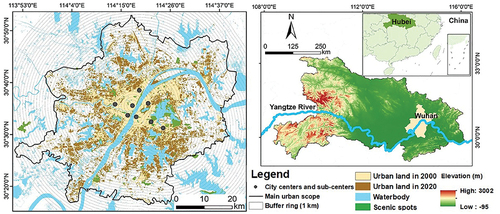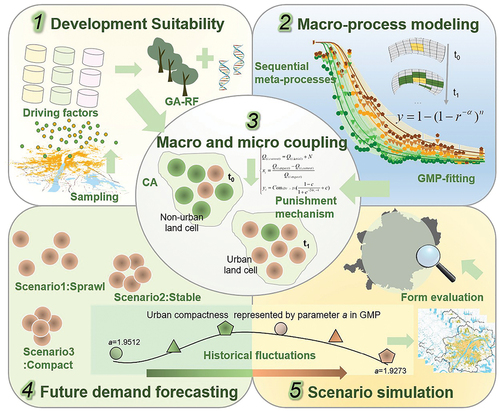Figures & data
Figure 3. Conceptual diagram of the geographic micro-process (GMP) model developed in this study. (a) portrays the accumulation of geographic meta-processes, and (b) portrays the influence of parameter regulation.
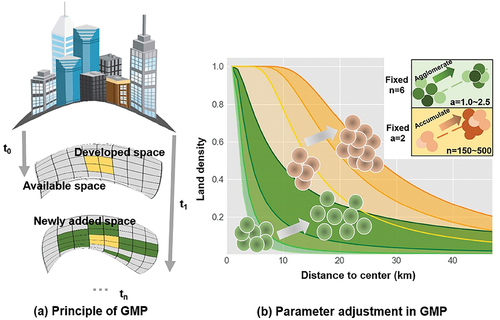
Figure 4. Illustration of the geographic micro-process (GMP) model used in this study. (a) GMP-fitting results; (b) portrays the variations in the parameter. The graphical shapes represent different time nodes. (c) increment proportion of land cells in each buffer ring. Green-based color denotes the data for 1995–2005, yellow-based color denotes the data for 2010–2020.

Table 1. Geographic micro-process (GMP)-fitting results and calculated cell number in different scenarios.
Figure 5. Comparison of simulation results and demand intensity of each buffer for 2020. (a–c) simulation results of non- geographic micro-process (GMP)-based model, true situation, and GMP-based models respectively. (d) graph portraying the standardized distribution of the newly-born cells.

Figure 6. Fitting diagram of the penalty term and the accuracy evaluation results of each model. (a) penalty-fitting results; (b) Kappa value results; (c) figure-of-merit (FoM) index results; (d) morphological similarity (MS) index results; geographic micro-process (GMP).
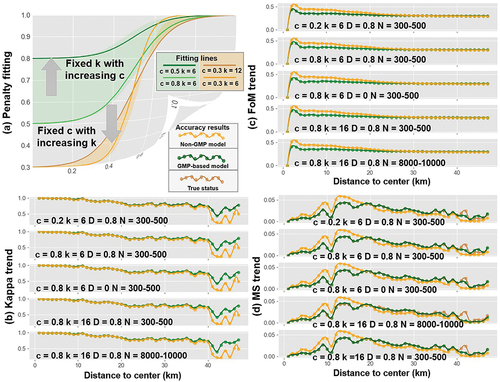
Figure 7. Simulations for various scenarios for 2025 and geographic micro-process (GMP)-fitting results. (a–c) results for compact, stable, and sprawl development, respectively; (d) GMP-fitting results for various scenarios for 2025 and 2030.
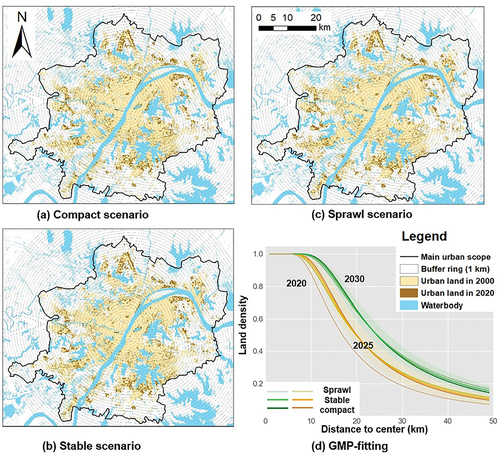
Figure 8. Simulation of various scenarios for 2030 and Grey model fitting results. (a–c) results for compact, stable, and sprawl development, respectively; (d) graph portraying the accuracy of the gray prediction algorithm.
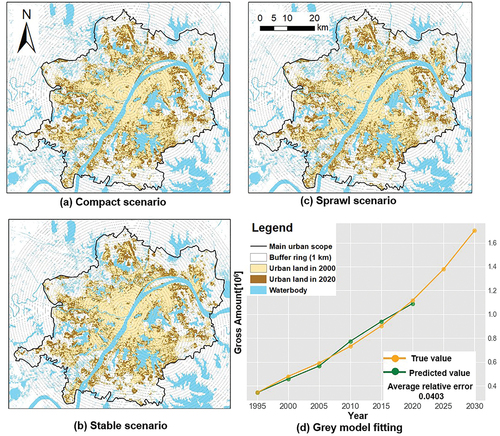
Table 2. Geographic micro-process (GMP)-fitting results and calculated cell number for different scenarios.
Table 3. Evaluation results for different scenarios.
Figure 9. Effects of each parameter of the penalty term: (a–d) effects of the c, k, D, and N parameters on the experimental results, respectively; geographic micro-process (GMP).
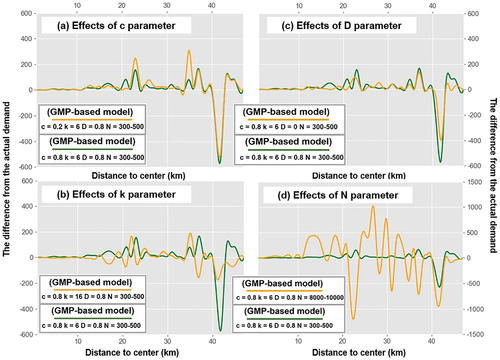
Table 4. Comparison of precision changes of different combinations of c, k, D, and N parameters.
Data availability statement
The data that support the findings of this study are available from the first author upon reasonable request.

